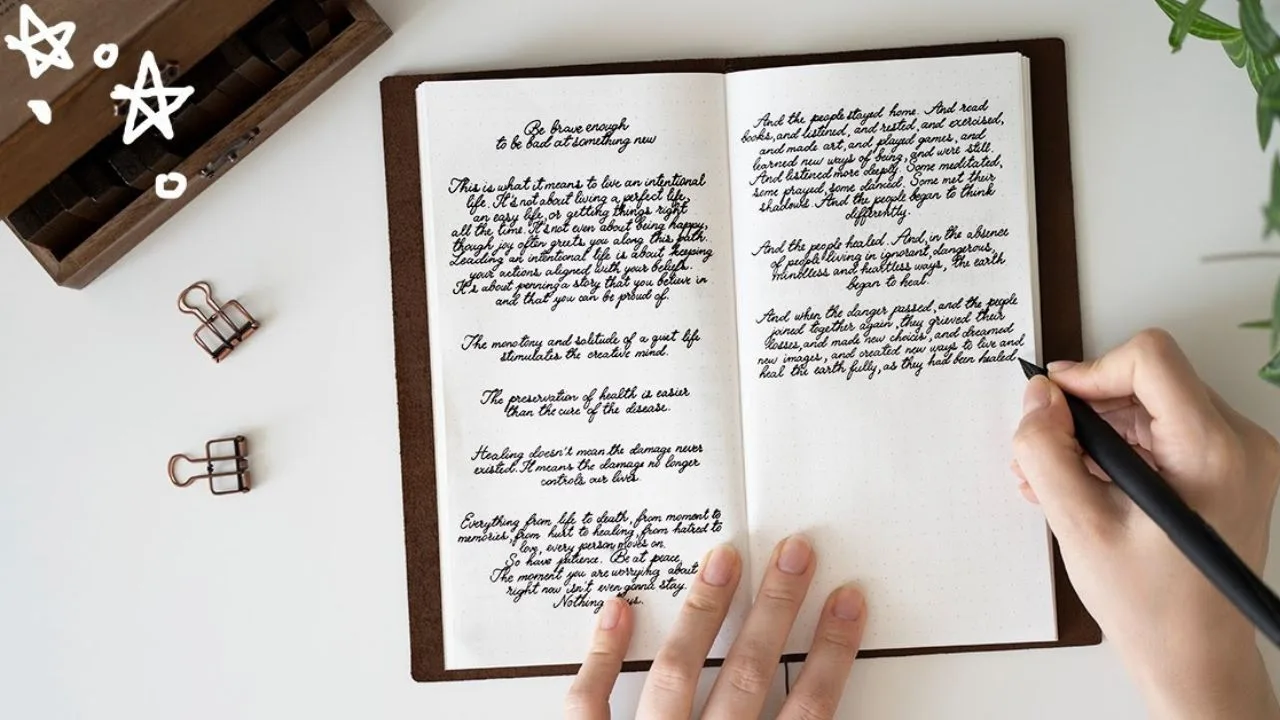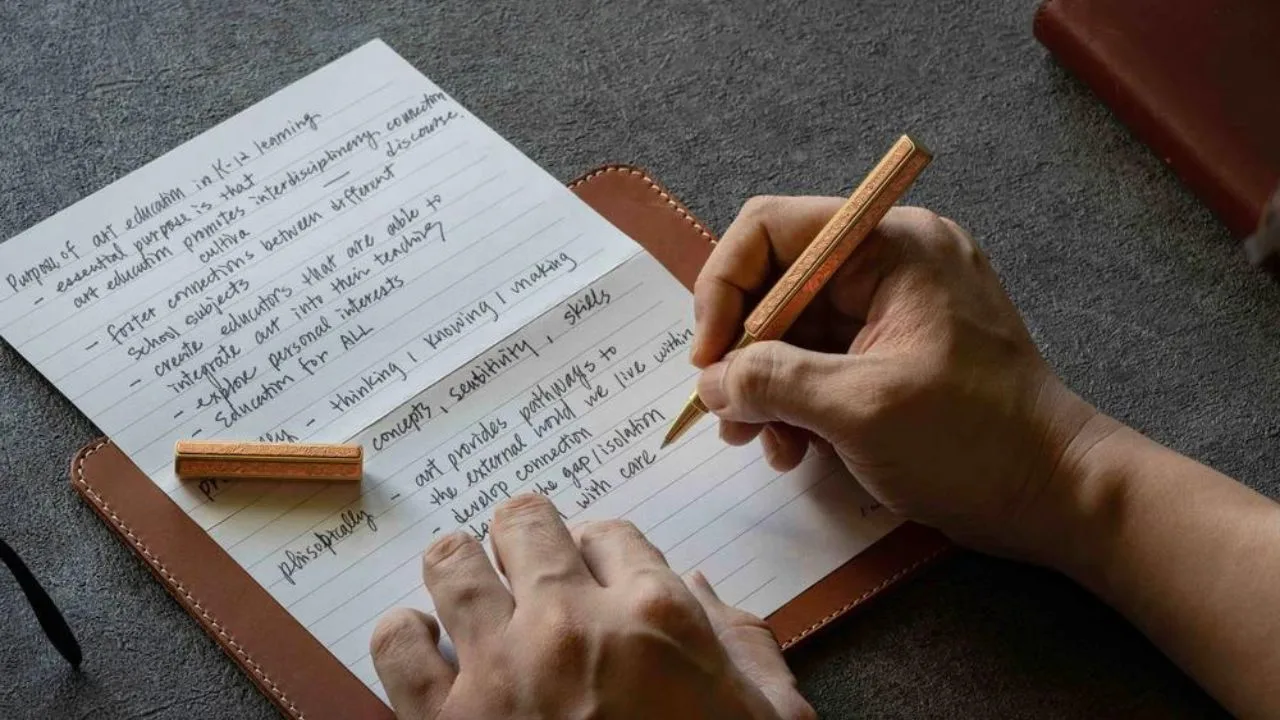Handwriting is the act of writing with a pen or other instrument, as opposed to printing. Handwriting is a unique form of expression and can vary significantly between individuals.
Whether you want to improve your handwriting for personal satisfaction, professional reasons, or academic purposes.
Analyzing Handwriting
- Choose a topic that you enjoy and write at least five sentences about it. If you’re not feeling too creative, simply copy a passage out of a book or newspaper. The goal is to get a general idea of what your handwriting looks like in your day-to-day life.

- Seeing what type of lines you tend to make can help you figure out your handwriting style. The angle at which you write your letters can change the look of your handwriting.
- Generally, handwriting is the easiest to read when your words are written flush against the lines of the page.
- Using more or less space than this can change how easy it is to read your handwriting.
- Whatever size you generally write in, it needs to be legible to you.
- Look at how you indent the page with your pen or pencil.
Choose the Right Tools
- Pen: Choose a pen that feels comfortable in your hand. Some people prefer gel pens for their smooth writing experience, while others like ballpoint pens for their reliability.
- Paper: Start with lined paper. The lines help you keep your writing straight and evenly spaced. As you improve, you might move to unlined paper for a more challenging practice.
Combine Letters into Words
Practice writing words by combining individual letters.
- Spacing: Maintain consistent spacing between letters and words. Proper spacing makes your handwriting look neat and organized.
- Size: Keep your letters a uniform size. This helps in making your writing legible and visually appealing.

Practice Regularly
- Daily Practice: Set aside a few minutes each day to practice. Even short practice sessions can lead to significant improvements over time.
- Use Practice Sheets: Find or create handwriting practice sheets with examples of letters and words. These can guide you and provide a structured approach to practice.
Changing Your Handwriting
Writing involves your hand, arm, and shoulder muscles.
- Find a comfortable grip by holding your pen or pencil between your thumb and index finger about ⅓ of the way from the tip.
- Making the same lines and shapes over and over helps your letters come out regular and consistent Different sizes and styles might fit in your hand more comfortably, which can change how you write Use your font inspiration and your handwriting analysis to focus on what you want to change about your letters.
By following these simple steps and practicing regularly, you’ll gradually see improvements in your handwriting.
